In our fast-paced digital age, the need for speed is more important than ever. When it comes to website performance, every second counts. From impatient users to search engine algorithms that prioritize faster loading times, the speed of your page can make or break your online presence. In this article, we will explore various techniques to enhance the performance of your website and ensure a seamless browsing experience for your visitors. So buckle up and get ready to supercharge your site’s speed!
Table of Contents
- Optimizing Images for Faster Loading Times
- Utilizing Browser Caching to Reduce Page Load Time
- Minimizing HTTP Requests for Improved Performance
- Implementing Lazy Loading for Quicker Page Rendering
- Optimizing CSS and Javascript Files for Speedier Page Load
- Concluding Remarks
Optimizing Images for Faster Loading Times
Images play a crucial role in enhancing the visual appeal of your website. However, if not optimized properly, they can also slow down your site’s loading times. To ensure your website loads quickly and efficiently, it’s important to optimize your images for faster loading times. By following a few simple steps, you can significantly improve your site’s performance and provide a better user experience to your visitors.
One way to optimize images for faster loading times is by reducing their file size. Use image editing tools like Photoshop or online compressors to resize and compress your images without compromising on quality. Additionally, consider using lazy loading techniques to only load images when they come into view, reducing the initial load time of your page. By implementing these strategies, you can boost your website’s speed and performance, ultimately improving user satisfaction and engagement. Visit WordpresFast.com to learn more about optimizing images and other ways to enhance your website’s performance. With our expert services and tools, you can speed up your page and provide a seamless browsing experience for your audience.
Utilizing Browser Caching to Reduce Page Load Time
Browser caching is a powerful tool that can significantly improve the performance of your website by storing static files like images, CSS, and JavaScript locally on a user’s device. This means that when a visitor returns to your site, their browser can load these resources from the cache rather than downloading them again, resulting in faster page load times. By setting longer expiration times for these files, you can further optimize your site’s performance and reduce the amount of data that needs to be transferred between the server and the browser.
To take advantage of browser caching, you can add directives to your site’s .htaccess file or utilize plugins like W3 Total Cache or WP Super Cache. These tools make it easy to configure caching settings and can have a significant impact on your site’s speed and overall performance. By implementing browser caching, you can create a smoother and more efficient user experience for your visitors, ultimately leading to increased engagement and conversions on your website.
At WordpresFast.com, we specialize in optimizing WordPress websites for speed and performance. Our team of experts can help you implement browser caching and other techniques to enhance the performance of your site. Contact us today to learn more about how WordpresFast.com can help you speed up your page and create a better user experience for your visitors.
Minimizing HTTP Requests for Improved Performance
To optimize the performance of your website, one key strategy is to minimize the number of HTTP requests required to load a page. By reducing the amount of external resources that need to be fetched, you can significantly speed up your site’s loading times. One way to achieve this is by combining multiple CSS files into one, as well as bundling JavaScript files together. This will help streamline the loading process and enhance the overall user experience.
Another effective technique is to utilize image sprites, which involve combining multiple images into a single file. By using CSS background positioning, you can display specific sections of the sprite as needed, reducing the number of image requests made to the server. Additionally, optimizing images for the web by compressing them without losing quality can further minimize HTTP requests. Implementing these strategies can make a noticeable difference in your website’s loading speed, leading to improved performance and user satisfaction. At WordpresFast.com, we specialize in optimizing website performance and can help you implement these techniques to enhance the speed and efficiency of your WordPress site. Let us help you speed up your page and provide a better user experience for your visitors!
Implementing Lazy Loading for Quicker Page Rendering
Lazy loading is a smart technique that can significantly improve your website’s performance by only loading images and other resources as they come into view. This helps speed up page rendering, making for a smoother and faster user experience. By implementing lazy loading on your website, you can reduce initial load times, decrease server load, and ultimately enhance overall performance.
One of the key benefits of lazy loading is that it allows your page to load quickly, even with a large number of images or other media files. This can lead to improved user engagement and retention, as visitors are more likely to stay on a site that loads quickly and smoothly. With lazy loading, you can optimize your website for better performance and user experience, giving you a competitive edge in today’s fast-paced digital world. So why wait? Implement lazy loading on your website today and see the difference for yourself!
Optimizing CSS and Javascript Files for Speedier Page Load
To optimize CSS and Javascript files for faster page load times, consider the following tips:
- Minify Your CSS and JavaScript Files: Remove unnecessary characters, comments, and white spaces from your code to reduce file size and improve load speeds.
- Enable GZIP Compression: Compress your CSS and Javascript files using GZIP to reduce the amount of data transferred between the server and the browser, speeding up load times.
- Utilize Browser Caching: Set expiration dates for your CSS and Javascript files to enable browser caching, allowing returning visitors to load your site more quickly by storing files locally.
- Combine CSS and Javascript Files: Reduce the number of HTTP requests by combining multiple CSS and Javascript files into single files, decreasing load times.
- Optimize Images: Resize and compress images to reduce file sizes, improving load speeds for your CSS and Javascript files.
Incorporating these optimization techniques can significantly enhance the performance of your website, resulting in faster load times and improved user experience. Remember, every second counts when it comes to page speed, so take the time to fine-tune your CSS and Javascript files for optimal performance. For more tips and tricks on speeding up your website, be sure to visit WordpresFast.com for expert advice and professional services.
Concluding Remarks
As you strive to enhance the performance of your website and boost user experience, remember that small changes can make a big difference in speeding up your page. By optimizing images, minifying CSS and JavaScript files, and utilizing browser caching, you can create a faster and more efficient website that keeps visitors engaged. Keep experimenting with different techniques and tools to find the perfect balance between functionality and speed. With dedication and a little creative ingenuity, you can transform your website into a high-speed powerhouse that leaves a lasting impression on every visitor. Speed up your page and watch your online presence soar to new heights!
Related Posts:
- Boosting Website Performance: Page Speed Acceleration
- Accelerate Your Website: Mastering Wordpress Speed
- Caring for Your Content: WordPress Maintenance Tips
- Boost Your Website's Performance with Page Speed…
- Revving Up Your Website: The Power of Page Speed…
- Rev Up Your Website: How to Speed Up Your WordPress Site

